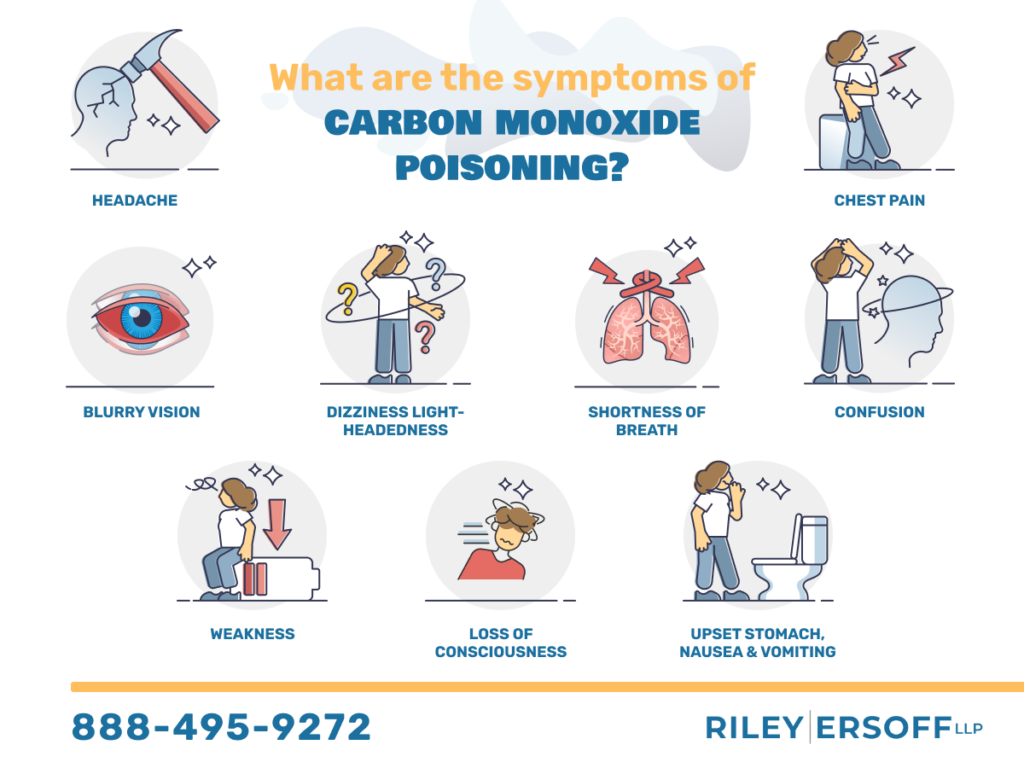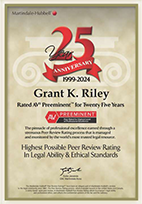
Knowing how to spot a carbon monoxide leak in your car is crucial for safety, as carbon monoxide is a poisonous gas. Its most dangerous feature is that it is a silent killer. You won’t be able to sense carbon monoxide exposure like you would smoke inhalation: you can see and smell smoke, but you can’t see or smell carbon monoxide.
A small exposure to carbon monoxide can make you sick and even put you in the hospital. Excessive exposure can kill you. Therefore, protection from possible carbon monoxide exposure is important.
Carbon monoxide poisoning can happen anywhere. The most common location is the house. But it can also occur in your car.
If you or a loved one was a victim of carbon monoxide poisoning, contact a California carbon monoxide lawyer to discuss your options.
What Is Carbon Monoxide Poisoning?
Carbon monoxide is a colorless, odorless, and tasteless gas. It is highly toxic, and exposure can result in death. According to the Centers for Disease Control and Prevention, at least 420 people die in the United States annually from accidental carbon monoxide poisoning. Over 100,000 people visit the emergency room for it. Cases of carbon monoxide are more common in the wintertime because that is when heaters (that run on gas) are used more.
Carbon monoxide poisoning is the build-up of carbon monoxide in the body. It is a serious condition that can lead to hospitalization or death. Carbon monoxide disrupts the oxygen in the bloodstream, essentially depriving the body of oxygen.
People can be exposed to carbon monoxide in different environments. The most common is in your house. But you can also be exposed to carbon monoxide from your car.
Carbon monoxide is a silent killer. If you suspect a leak in your car has caused harm, our team is here to help. We’ll work tirelessly to get you the compensation you deserve. CONTACT US TODAY
How Can Carbon Monoxide Be an Issue for Cars?
You probably associate carbon monoxide poisoning with gas leaks in your home. You know having a carbon monoxide detector in your home is vital to your family’s safety. But home isn’t the only place you can be exposed to carbon monoxide poisoning.
All fuel-running cars (gas or diesel) produce carbon monoxide. Therefore, these cars carry the risk of carbon monoxide poisoning.
The following are common ways carbon monoxide poisoning can become an issue for your car:
- Broken exhaust. All fuel-running cars produce carbon monoxide and other toxic gasses. If the exhaust is broken, carbon monoxide can leak into the car’s interior.
- Small space. Leaving the car on in a small space can lead to carbon monoxide poisoning. For example, warming the car up in the winter while inside the garage is dangerous. Even if the garage door is open, you can still be exposed to carbon monoxide.
Knowing these common causes of carbon monoxide poisoning in your car can help identify the leak before someone gets hurt..
Symptoms of Carbon Monoxide Poisoning While Driving

The most dangerous part about carbon monoxide poisoning is that you won’t notice it. That’s why it’s called a silent killer. If exposed to carbon monoxide, a person may exhibit the following cardiac, neurological, and respiratory symptoms:
- Headache,
- Dizziness or light-headedness,
- Upset stomach or nausea,
- Tightness or pain in the chest,
- Blurry vision,
- Shortness of breath,
- Weakness,
- Vomiting,
- Confusion,
- Loss of consciousness, and
- Death.
Heavy exposure to carbon monoxide can impair your driving skills. And because you will not realize you are being exposed to the poisonous gas, you will continue to drive. This can result in an accident, especially if you lose consciousness.
If you are exposed to high concentrations of carbon monoxide, the oxygen in your body can be disrupted, and you can suffocate. Carbon monoxide can be fatal.
The people most at risk for developing dangerous complications or dying from carbon monoxide exposure include the following:
- Elderly (over 65 years old),
- People with heart problems,
- People with respiratory illnesses or difficulty breathing,
- People who smoke,
- People with anemia, and
- Babies.
If you suspect carbon monoxide poisoning, you should seek medical attention immediately. A healthcare provider can do a blood test to determine the levels of carbon monoxide in your body.
Victim of Carbon Monoxide Exposure? Our Carbon Monoxide Poisoning Attorneys Are Here To Help
How to Spot a Carbon Monoxide Leak in a Car
So how do you spot a carbon monoxide leak in your car? There are several different techniques you can use.
Get a Carbon Monoxide Detector
You can get a handheld carbon monoxide detector that you leave in your car. Its purpose is to measure how much carbon monoxide is in the air. Make a point to check this detector when you are in your car to ensure there is no carbon monoxide in the car’s interior.
Get a Carbon Monoxide Alarm
This is a similar option to the detector. You leave carbon monoxide detectors in your home to protect your family from carbon monoxide that escapes from gas leaks, faulty heaters, or broken appliances. You can also put a battery-operated carbon monoxide alarm in your car.
If your car’s interior is filled with carbon monoxide, the alarm will sound off, and you must get the car checked immediately.
Go for Annual Car Service
You should try to service your car, especially the exhaust, every year. If there is any defect or leak in the exhaust, it can be repaired. Make sure the mechanic is recommended and has experience in carbon monoxide detection.
Go for an Exhaust Inspection
You should get your car’s exhaust tested after an accident. This will ensure that the exhaust is not damaged and is functioning efficiently. Even if it was just a minor fender-bender, you should still have your exhaust checked. It’s better to be safe than to be poisoned by carbon monoxide.
Carbon Monoxide Poisoning Liability
If you believe you were exposed to carbon monoxide poisoning in your car, you may be entitled to compensation. Possible responsible parties may include:
- Car manufacturer—if the car was designed or manufactured negligently; or
- Car repair or service shop—if they failed to detect the source of the carbon monoxide leak.
A carbon monoxide poisoning attorney can review your situation and see if the facts rise to a personal injury or wrongful death claim.
Contact Riley | Ersoff Today
Carbon monoxide poisoning is scary and dangerous. You may have a lot of questions about how this happened and your legal options for seeking compensation.
Grant K. Riley and Victoria Ersoff will fight for your rights. With decades of experience, they put their hearts and determination into every case they have. Contact Riley | Ersoff LLP now for a free consultation.
The post How to Spot a Carbon Monoxide Leak in Your Car appeared first on Riley | Ersoff LLP.

















